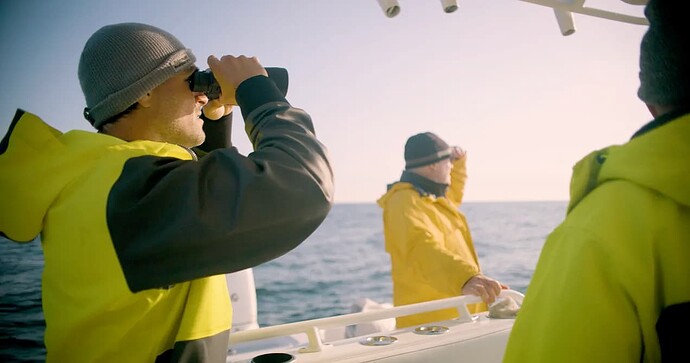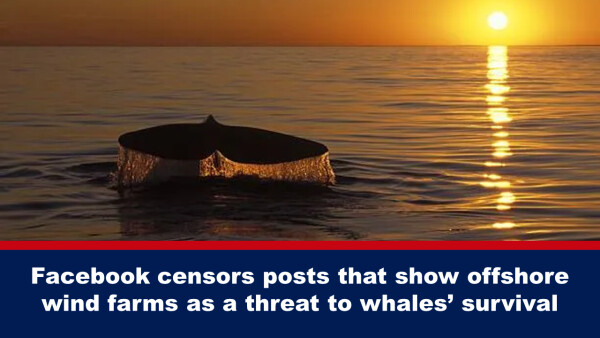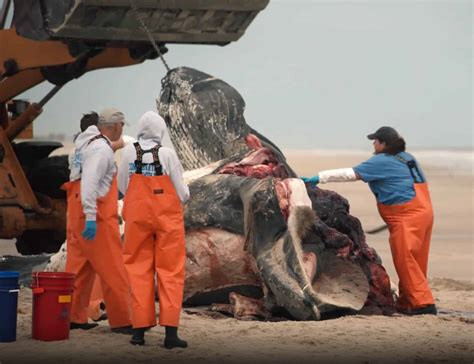Whistleblower Speaks Out: Offshore Wind Will Drive Whales to Extinction
Dec 4
Read our open letter below.
Dear Fellow Concerned Members of the Public,
The critically-endangered North Atlantic right whale, one of the most imperiled mammals in the world, seemed until just a few years ago to be on a path to recovery. It was our nation’s energy policy in the 18th century to kill the right whales for their oil, but the species was recovering after the 1982 ban on whaling took effect.
Today, the whale is in more danger than ever. An “unusual mortality event” beginning in 2017 has reduced the population by 30 percent. The North Atlantic Right Whale Consortium’s October 2022 count estimates that only 340 individuals survive, with fewer than 70 breeding females and an overall decline in body size. Major sources of stress today include fishing gear entanglements, vehicle collisions, and climate change.
But one source of danger to the right whale is rarely discussed: the industrialization of their habitat by offshore wind companies, enabled by two government agencies, the National Oceanic and Atmospheric Administration Fisheries (NOAA Fisheries) and the Bureau of Ocean Energy Management (BOEM). The head of New England Aquarium’s whale impact monitoring program has openly stated that the first offshore wind projects will serve as a “test bed” to study their impacts on the whale.

A recently-surfaced letter from a whistleblower indicates that BOEM and NOAA were aware in May 2022 that offshore wind construction and operation posed a direct danger to the North Atlantic right whale.
The author, NOAA’s own Chief of Endangered Species, Dr. Sean Hayes, bravely sounded the alarm, noting that not only the construction but also the operation of wind turbines could result in extinction.
Yet these agencies have failed to put in place any meaningful measures to protect this critically endangered species from extinction.
By NOAA Fisheries’ own admission, “The potential biological removal (PBR) level for the species, defined as the maximum number of animals that can be removed annually while allowing the stock to reach or maintain its optimal sustainable population level, is less than 1.” In plain language, this means the death of a single whale could make the difference between extinction and recovery.
Recent data collection finds the whales are increasingly relying on the southern Massachusetts wind lease area as a last refuge for foraging and raising their young. Because the federally-designated critical right whale habitat is out of date, these very same areas have been approved by the federal government for industrialization by offshore wind companies.
For a long time it was unclear what effects the plants’ construction and operation might have on whales. Several groups including our coalition raised the alarm and called for a moratorium until more studies could be conducted.
In response to these concerns, NOAA Fisheries and the Bureau of Ocean Energy Management (BOEM) in October this year released a draft joint strategy to “to protect and promote the recovery of North Atlantic right whales while responsibly developing offshore wind energy.” But this strategy is misleading – the authors frame their plan to meet their obligations under the Endangered Species Act as a mere “vision,” and there is little evidence that the proposed mitigation measures are effective, practicable or backed up by sufficient funds.
Our coalition’s public comments can be found here.
In order for the development of the projects to go forward, an Incidental Harassment Authorization (IHA) must be issued by NOAA when a federally listed marine mammal may be harmed. The issuance of an IHA requires that it is possible to fully mitigate the effects of any harassment, and from Hayes’ letter it is clear that this is not the case.
Hayes’ letter stresses that the presence of wind turbines would disrupt the dense populations of zooplankton that right whales rely on for food. Hayes describes the wind lease area as “the only known winter foraging area for right whales” and warns against the impacts not only from construction but also from the expected 30-year operation of offshore wind turbines on foraging grounds, which could “vary from hundreds of meters for local individual turbine impacts…to large-scale dipoles of surface elevation changes stretching hundreds of kilometers.”
Most damningly, he states, “impacts from installed and operating turbines cannot be mitigated for the 30-year lifespan of the project, unless they are decommissioned.”
A lawyer from the Conservation Law Foundation, an organization that is “strongly supportive of offshore wind,” acknowledged that the area slated for wind development was poorly surveyed for right whales prior to the permitting agencies selling 1,400 square miles of our federal waters to foreign wind energy companies.
NOAA and BOEM’s draft mitigation plan fails to address Hayes’ concerns. Additionally, it is interesting that the letter was not made available to the public until November when a local newspaper, the New Bedford Light, accessed it through a Freedom of Information Act request.
Hayes has risked his career and reputation by writing a letter of this seriousness. The international offshore wind industry is estimated to be worth $31.2 billion. Major conservation organizations, including the New England Aquarium and the Environmental League of Massachusetts, receive funding and sponsorships from offshore wind companies. Not to mention the weight of the Biden-Harris’s administration’s pro-offshore wind policy, backed by numerous large government agencies.
But evidence continues to mount. On November 24th, scientists published stronger evidence indicating that offshore wind operations “can have a substantial impact on the structuring of coastal marine ecosystems,” with effects far beyond the area of the turbines themselves.
With fewer than 350 North Atlantic right whales alive today, we must heed the science and call on the government to fulfill its obligations. The first large-scale offshore wind projects cannot serve as test beds to determine the impacts of turbines on a critically endangered species. And while climate change is an imperative, it is indefensible for any industrial project to push a species to extinction.
It was our own whaling industry that pushed the right whale to the brink. Today, our energy industry seems to be repeating its mistakes.
With this in mind, we are no longer calling for a moratorium. We are calling for the project to be canceled outright.
It is unacceptable for the government to allow large-scale industrial experiments in critical habitat for a species on the brink of extinction. The construction of industrial wind projects in any North Atlantic right whale habitat is, at this point, a clear violation of the Endangered Species Act.
Sincerely,
The Save Right Whales Coalition







